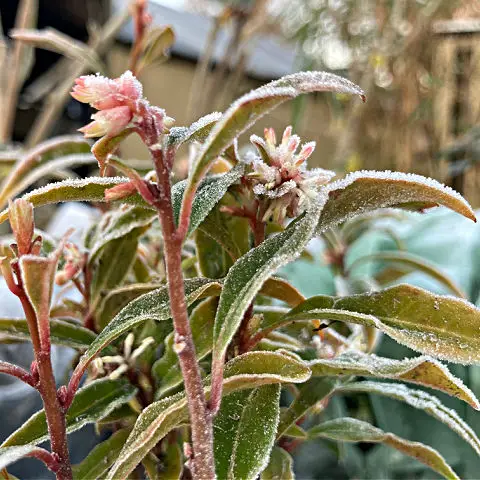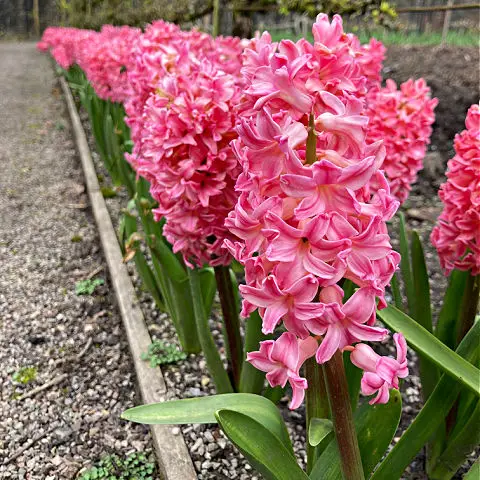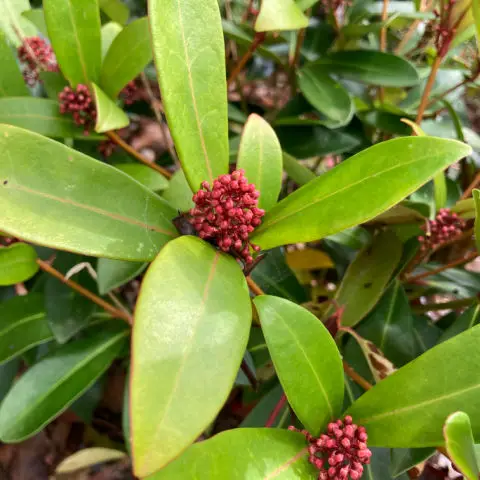Flowers for fragrance in spring
Flowers for fragrance in spring are such a treat. In the cool, damp air of spring, I think there is nothing nicer than noticing the scent of flowers in the garden or as I walk along a street. Additionally, as spring progresses and the air and soil warm, the number of fragrant blooms increases. And reminds us of the riot of colour and scents to come over the summer months.
I can be a bit of a fair-weather gardener. So anything that entices me into the garden and encourages me to stay there is a good thing. I think it is worth investing in a few key plants that will fill the garden with their sweet scent throughout the year.
Growing shrubs and herbaceous perennials in pots allows us to move them around the garden. So that we can make the most of them during their flowering period. This allows us to move them to a less conspicuous place when they have finished their moment of being a star in the garden.
Dianthus

Flowers for fragrance in spring include Dianthus. For years I thought of Garden Pinks as a bit old fashioned, but a couple of years ago I bought a tray of them to use as ground cover . And I’ve been delighted with the results. The fragrance of Dianthus fills the air around the plants. And there is a huge array of colours from which to choose. The silvery-green leaves and stems are attractive and form mounds, above which the flowers appear.
In my garden, the flower buds tend to suffer in the very wet spells, but deadheading keeps the flowers coming over a long period. They propagate readily from cuttings, so one or two plants is sufficient to provide plenty of new plants for the garden.
Peony ‘Claire de Lune’
This hybrid peony has distinctive mid-green leaves and is early to flower. From mid-May, it provides a good display of flowers with pale lemon-yellow petals and a bright golden centre. Peony ‘Claire du Lune’ flowers are sweetly scented and also, good as a cut flower. Growing to around 70cms tall, it’s a good plant for the centre of the border. I also grow peonies at the front of the border, to add a splash of colour and to enjoy their fragrance more closely. Although the flowering period is only a month or so, I think it earns a place in the garden for the interest it provides.
Hamamelis × intermedia ‘Jelena’

This variety of witch hazel grows to form a large, deciduous shrub, reaching 3m height and spread. The bare stems provide a visual framework upon which the flowers are borne. Each striking flower has slim, dangling petals that are deep yellow, flush with red at the base. Hamamelis × intermedia ‘Jelena’ prefer a sheltered site. But I’m growing them in the long shrubbery in our north-facing, windy hillside garden and they are coping well.
Viola odorata ‘Baroness Alice de Rothchild’
Here’s a plant for the front of the border, tucked under a tree or in pots and containers near the house. Sweet Violets are low growing with dark green leaves and large, but delicate-looking, purple flowers held above the leaves. Grows to around 20cms high, it prefers free-draining fertile soil. The fragrance is of violets (think of the pale purple sweets). Viola odorata flowers from winter through to spring.
Sarcococca confusa

I often see this plant described as ‘unassuming’ and it’s a perfect description of its visual impact. An evergreen shrub that grows to around 2m tall. It has green, glossy leaves, it is nothing to write home about for most of the year. However, when it comes into flower, during late winter or early spring, you will notice Sweet Box before you see it. The scent of the little cream flowers is strong and heady without being cloying. I have a Sarcococca confusa growing in a large pot which I put near the front door of the house during March and April.
Hyacinths

The unmistakable fragrance of hyacinths will hang in the air around a clump of flowers. Edge a path or have a clump near the door, so that you can enjoy their scent as you walk past. In the garden hyacinths will naturalise. They look less like those fussy clusters of flowers that we know from forced or prepared hyacinths in bowls. But naturalised hyacinths still provide a sweetly scented area.
Skimmia japonica ‘Fragrant Cloud’

A compact evergreen with heavily fragrant, white flowers that open in spring. Skimmia form male and female flowers on separate plants. ‘Fragrant Cloud’ is a male flowering shrub, so does not produce berries after flowering. However the glossy leaves provide a good backdrop to other plants in the garden. The tiny and closely packed bell-shaped flowers smell of lily of the valley. It grows best in an acid soil or pot with ericaceous compost and will tolerate shade and windy site.
Myrrhis odorata

Sweet Cicely is an herbaceous perennial herb with a sweet aniseed flavour. All parts of the plant are edible. A few leaves added to rhubarb can reduce the amount of sugar needed by up to 25%. Cook roots like a parsnip (they taste of like parsnip with aniseed). And, my favourite are the seeds, which can be eaten when green. They are as sweet and flavoursome as the aniseed balls we ate as children. In some areas, Myrrhis odorata may be considered invasive. However, plants can be kept in check by removing all seeds before they drop and through cutting back throughout the season.
Thrifty tip
Make full use of hanging baskets throughout the winter and spring by planting with fragrant flowers like sweet violets and bulbs for early season colour. Hang them near the door so that you can enjoy them each time you walk past. When you are ready to plant the baskets up for summer, you can transplant the contents into the ground to continue growing for years to come.
More information
The article ‘Flowers for fragrance in spring’ was written for Amateur Gardening magazine in spring 2024. I have updated some of the specific varieties and images. Links are included to help you find the suggested plants that have flowers producing a scent in the spring months.
If you know of other flowers that offer a good scent in spring, please leave a comment, especially if you live in a climate that is different to the oceanic temperature climate of the UK. It would be great to build a resource for gardeners across the globe.
- Autumn Groundcover - December 19, 2025
- Beautiful Bog Garden Plants - December 5, 2025
- Climbing plants for small gardens - November 21, 2025
